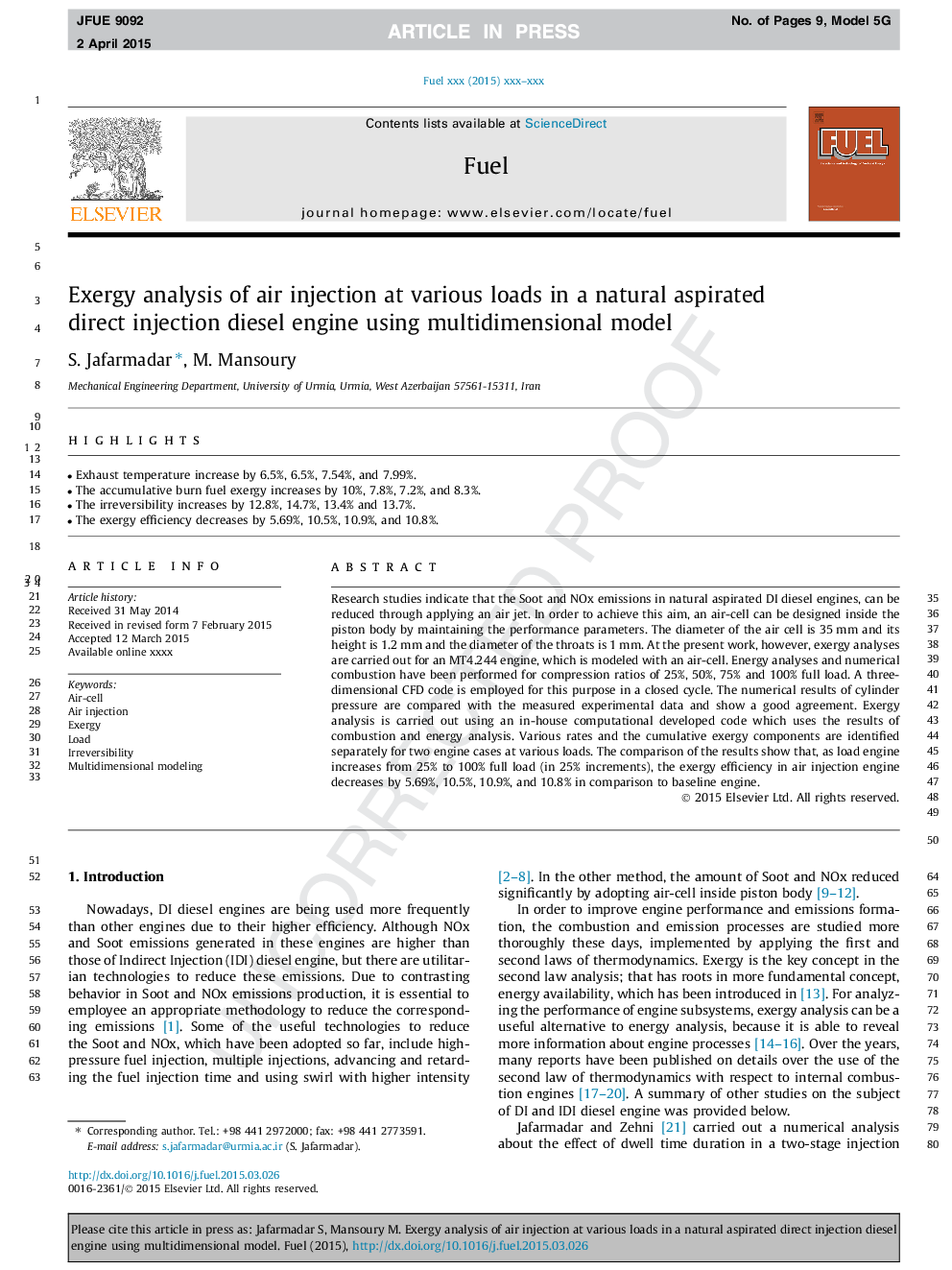| Article ID | Journal | Published Year | Pages | File Type |
|---|---|---|---|---|
| 6635420 | Fuel | 2015 | 9 Pages |
Abstract
Research studies indicate that the Soot and NOx emissions in natural aspirated DI diesel engines, can be reduced through applying an air jet. In order to achieve this aim, an air-cell can be designed inside the piston body by maintaining the performance parameters. The diameter of the air cell is 35Â mm and its height is 1.2Â mm and the diameter of the throats is 1Â mm. At the present work, however, exergy analyses are carried out for an MT4.244 engine, which is modeled with an air-cell. Energy analyses and numerical combustion have been performed for compression ratios of 25%, 50%, 75% and 100% full load. A three-dimensional CFD code is employed for this purpose in a closed cycle. The numerical results of cylinder pressure are compared with the measured experimental data and show a good agreement. Exergy analysis is carried out using an in-house computational developed code which uses the results of combustion and energy analysis. Various rates and the cumulative exergy components are identified separately for two engine cases at various loads. The comparison of the results show that, as load engine increases from 25% to 100% full load (in 25% increments), the exergy efficiency in air injection engine decreases by 5.69%, 10.5%, 10.9%, and 10.8% in comparison to baseline engine.
Related Topics
Physical Sciences and Engineering
Chemical Engineering
Chemical Engineering (General)
Authors
S. Jafarmadar, M. Mansoury,
